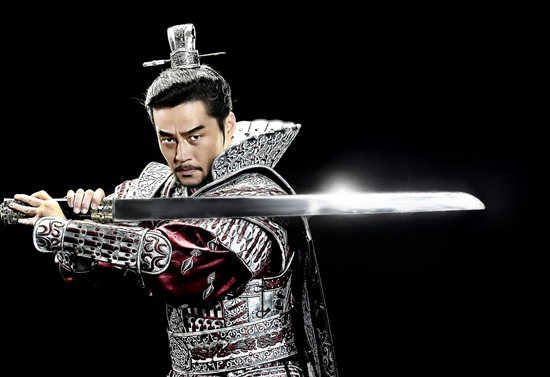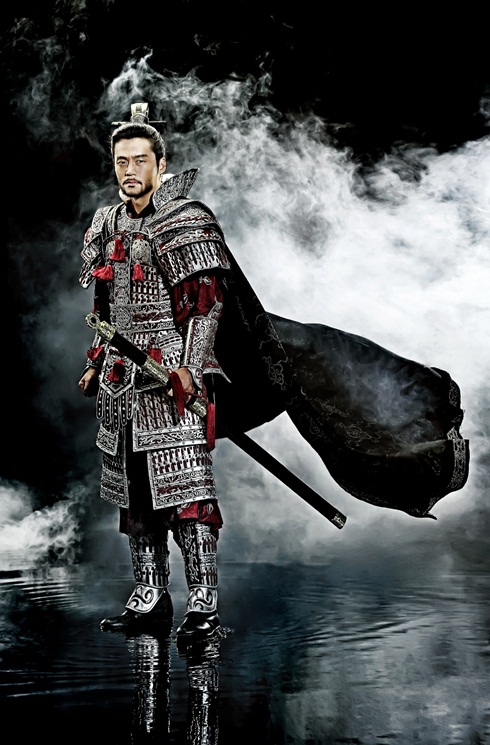
[Article] The Last Great Commander of Baekje Dynasty, Gyebaek.
Cr. - http://world.kbs.co.kr/
Victory is not only for winners. The defeated can also be victorious, even after losing a battle. General Gyebaek of Baekje Dynasty courageously fought until his death with 5,000 men in the Battle of Hwangsanbeol, while knowing from the start that it would be impossible for him to win the battle. General Gyebaek’s last battle marked the tragic end of Baekje, and 1,300 years after his death, he still remains a symbol of Baekje Dynasty.
The Unknown Life of Gyebaek
Not much record remains on Gyebaek. Even in ‘Samguk Sagi: History of the Three Kingdoms’ and ‘Samguk Yusa: Memorabilia of the Three Kingdoms,’ which records the history of the Three Kingdoms, Goguryeo, Baekje and Silla, there is no record of Gyebaek’s year or place of birth nor any information on his lineage. In ‘Daedong Jiji’ written by Kim Jeong-ho in 1865, it is recorded that Gyebaek’s name is Seung and has the same last name as Baekje. This led to the inference that his last name is Buyeo, the last name of the Baekje royal family. In ‘Buyeoji,’ published in 1928, it is written that Palchoongmyeon is named after the 8 loyal subjects of Baekje, including Gyebaek. From this, historians inferred that Gyebaek was born in today’s Buyeo County.
Several stories that describe the extraordinary aspects of Gyebaek have also been passed down. One story tells that when Gyebaek’s mother fainted while giving birth to him, a tiger took the baby and suckled him. According to another story, every time Gyebaek climbed Cheondung mountain (천둥산) in Buyeo, pine trees fell like reeds, and when he stepped on rocks while training, marks were left on the rocks. Gyebaek, who was talented with martial arts since childhood later becomes an unforgettable name for his last battle in Hwangsanbeol.
The Battle of Hwangsanbeol
Baekje Dynasty was once the most prosperous and powerful out of the Three Kingdoms. However, in the 600s, Baekje battled vigorously against Goguryeo and Silla over territorial claims. After losing the area near Han River to Silla, Baekje formed an alliance with Goguryeo and Japan, and began to atack Silla. As a result, Silla allied with Tang Dynasty and sent an allied force of 50,000 men to attack Baekje. All of the loyal subjects of Baekje advised King Uija to prepare for the attacks, but the king ignored their counsel and continued to enjoy his parties. When enemies advanced towards Tanhyeon and Baekgang, strategic locations of Baekje, King Uija sent General Gyebaek to stop the enemy. Gyebaek leaves for Hwangsanbeol in July 660.

The Last Hero of Baekje in Hwangsanbeol
The allied forces of Silla and Tang Dynasty set July 10, 660 as the date to take Baekje’s capital, Sabi. The Tang troops, which came to about 130,000 men, landed on the river mouth of Geum River and headed towards the capital. The Silla army of 50,000 men led by Kim Yu-shin approached Hwangsanbeol, today’s Nonsan, South Chungcheong province, but were held back by Gyebaek’s army of 5,000 men who were determined to die on battlefield. On July 9, when the Silla troops arrived at Hwangsanbeol, the Baekje forces which were divided into 3 camps received them and won victory in 4 battles.
5,000 against 50,000, it was an impossible battle to win from the beginning. Gyebaek believed that it would be better for his family to die in his hands than to live in shame as slaves of the enemy, so he killed his family. He was determined to fight until his death and this encouraged the Baekje soldiers to fight desperately against the approaching enemy.
However, when two young Hwarang Bangul (반굴) and Gwanchang (관창) died in battle, the Silla forces were able to raise their morale and launched a full-scale attack against Baekje. The entire Baekje army died in battle in Hwangsanbeol, allowing the Silla troops to unite with the Tang army and capture Sabi. This leads to the collapse of Baekje Dynasty, which had lasted for 678 years.
The Long-lasting Bravery of Gyebaek
History is written by the victorious, thus records of the defeated tend to be lost and forgotten. Yet General Gyebaek’s bravery continues to live on in the hearts of Koreans today even after 1,300 years. Gyebaek’s loyalty to the country and courageous fight against the enemy makes us think about the meaning of nation to an individual and how a man should live his life.


No comments:
Post a Comment
Note: Only a member of this blog may post a comment.